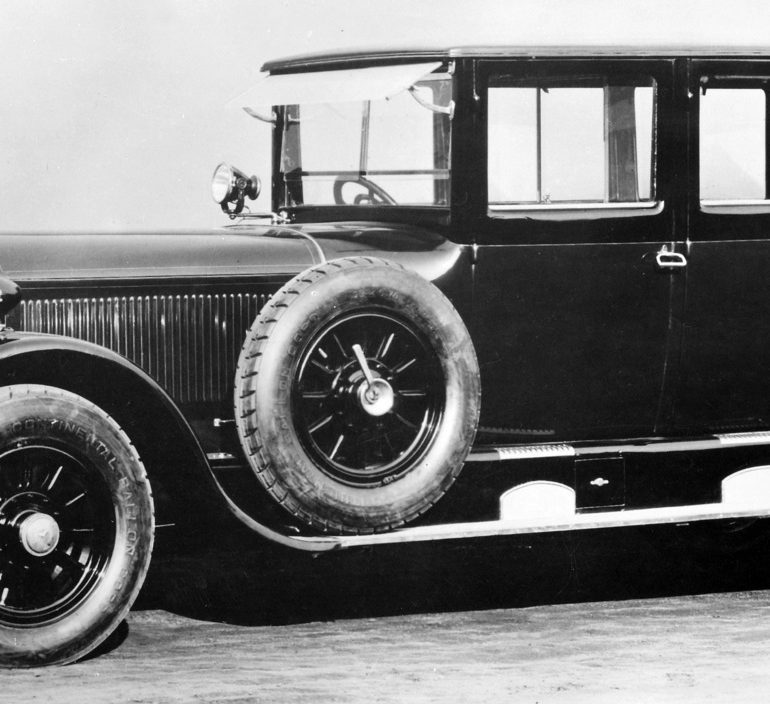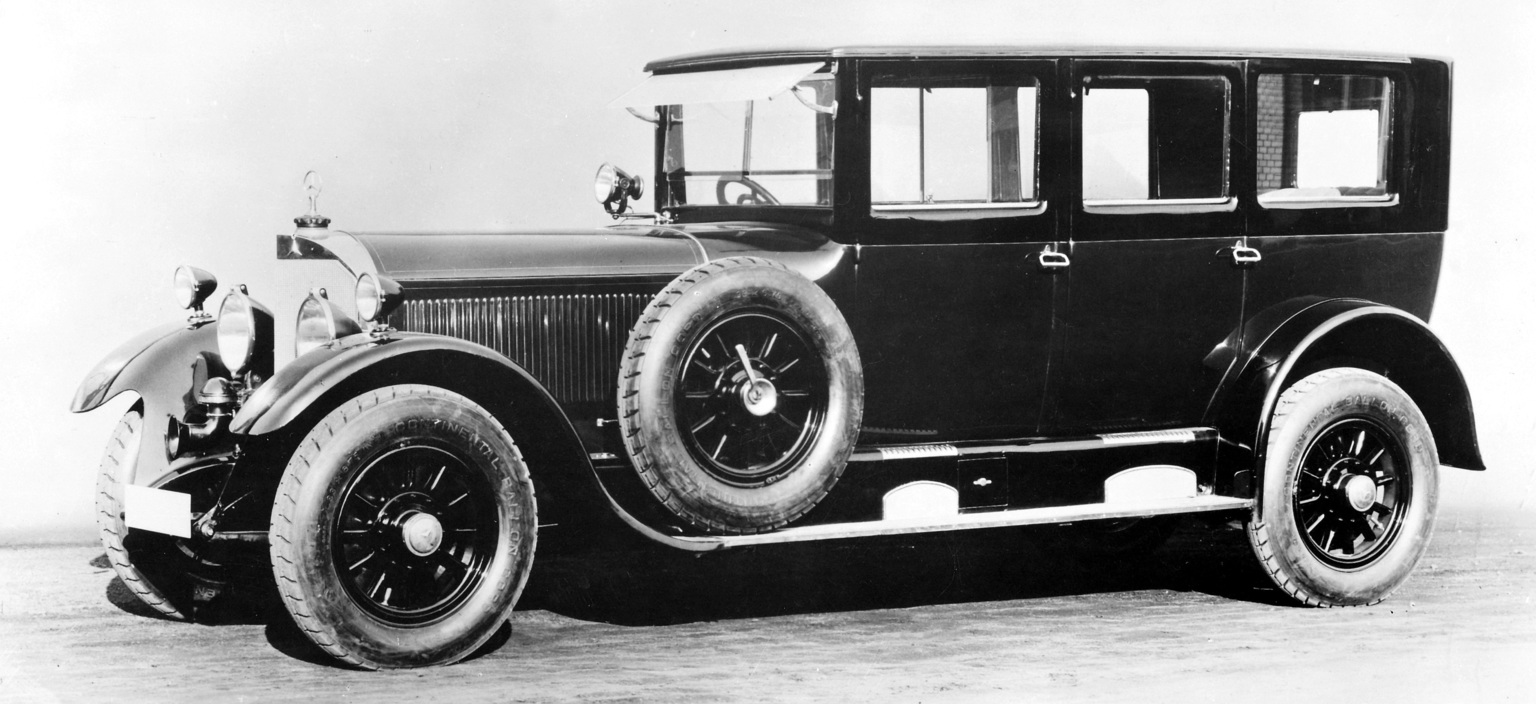1924→1926 Mercedes 24/100/140 PS
Paul Daimler left DMG in 1922 in disagreement with the Supervisory Board. It had called for easier-to-sell models in the lower price ranges, whilst Daimler wanted a new model with eight cylinders. His successor was Ferdinand Porsche, who had come from Austro Daimler. He had already taken over from Daimler once before, at Austro Daimler’s forerunner, the company Austrian Daimler-Motoren-Gesellschaft mbH in the town of Wiener Neustadt. What was not known at the time was that Porsche’s main development focus was also more on large and expensive cars rather than small and lower-priced models. So in hindsight it is not surprising that the first project Porsche undertook was to design a representative twin model series of new luxury vehicles with displacements of 4 litres and 6.2 litres. The only differences between the two were to be found in the swept volume of the engines, in the wheelbase, the overall length and a few points of detail in the body. The length available for the body on the chassis and the technically sophisticated basis were identical. The larger engine required a wheelbase that was 120 millimetres longer and resulted in the chassis weighing 100 kilograms more.
Porsche followed his previous convictions at DMG, too, believing that a good and powerful engine also had to be aesthetically pleasing. For the new six-cylinder engines he adopted the basic concept that he had also used for his engine designed at Austro Daimler, from that company’s Model AD 617. The common features were the light silumin-cast crankcase with drawn-in dry cast cylinder liners, the crankshaft with only four bearings and the removable cylinder head with an overhead camshaft, which used rocker arms to operate the valves positioned in line via valve levers. The camshaft was driven by a vertical shaft driven from the clutch side. Together with the manual transmission the engine formed a cohesive component and thus at the same time a huge functional block. It comprised all the levers required to operate the car, including the steering gear and the steering column with the steering wheel. Fitted to the transmission were the starter, the air pump for inflating the tyres in case of damage to them, the hand levers for the gearshift and handbrake plus the pedals for the clutch and brake.
For his new designs at DMG, which arrived on the market in 1924, Porsche adopted the principle of supercharging which had been introduced by Paul Daimler. The positive-displacement belt-driven supercharger, with a high-ratio design of around 1 : 3, was located at the front end of the engine in a light-alloy housing fitted with cooling ribs. It was switched on by pressing down the accelerator, similarly to the kickdown position familiar from today’s automatic transmissions, via a multiple-disc clutch. When the accelerator was released it was slowed down by a multiple-disc brake located on the crankshaft.
For the two large touring cars Porsche used the principle of the pressure carburettor engine – situated between the belt-driven supercharger and the combustion chamber – which had long been championed at Daimler-Benz.
An early form of the multifunction steering wheel
The characteristic features which stood out at that time compared with the passenger cars produced up until then were the removable cylinder head, the dry multiple-disc clutch in place of the double-cone clutch with a leather gaiter used thus far, the slightly pointed nickel-plated honeycomb radiator instead of the previous more deeply contoured and painted pointed radiator, the introduction of an actuating ring on the steering wheel for operating the horn by pressing the upper part of the ring and the dimming device by pressing the lower part of the ring, and the internal expanding brake for all four wheels.
In Porsche’s two-passenger car with a 4-litre and 6.2-litre engine, the Model 24/100/140 hp with the larger unit was the driving force – not in terms of the number of vehicles built – the smaller and less-expensive car retained the upper hand there. But when it came to the image factor – esteem, as people would say in those days – the car with the brawny engine was clearly the more representative vehicle.
Over the years changes were made to the model designation. To start with it was called the Mercedes 24/100/140 hp, and then after the merger in June 1926 Mercedes-Benz 24/100/140 hp. In 1928 it became the Model 630, as the previous rather cumbersome name was not much of a purchasing incentive, and also the aim was to introduce uniformity with the Stuttgart, Mannheim and Nürburg vehicle names, which were also given a model number which corresponded to the displacement.
In Detail
| submitted by | admin |
| type | Series Production Car |
| production years | 1924 – 1926 |
| built at | Untertürkheim, Germany |
| engineers | Ferdinand Porsche |
| engine | Inline-6 |
| position | Front, Longitudinal |
| aspiration | Supercharged |
| displacement | 6240 cc / 380.79 in³ |
| power | 104.4 kw / 140 bhp |
| specific output | 22.44 bhp per litre |
| length | 3750 mm / 147.6 in |





